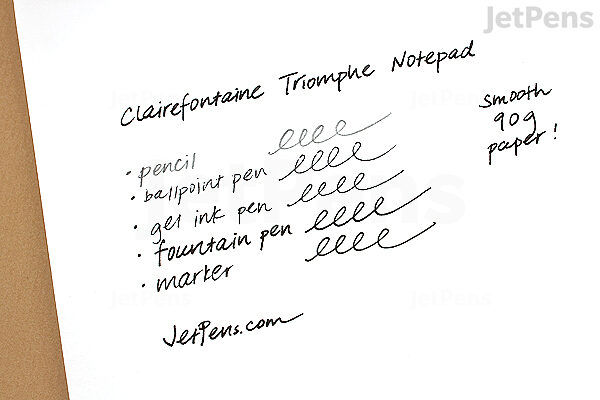There are a huge number of factors to consider when picking a great paper for use with fountain pens. It is very much like picking a fine wine with many subtleties and nuances. However, any great paper will bring out a whole new life to your pens and ink, letting you see things you would have missed before like sheen.
Let’s start with an overview of the things to consider when picking a paper. Click here to jump straight to the recommendations.
Whiteness and Color
Paper, as you may know, can be found in almost every color imaginable, from pure white to a bright neon pink. The de facto standard for more fountain pen paper is white. Some papers can be more white (brighter and less gray) than others. Another popular color is a cream/ivory color. This can make your ink look different and sometimes creates some really nice effects with certain inks. Cream paper is also somewhat easier on the eyes as it is not as bright.
Here is a sheet of white paper (HP 32lb Premium Laser) with a sheet of ivory paper (Southworth 32lb Ivory Laser). Notice the color change from white to yellow, near the cap of the pen.

Feathering
Some cheaper papers have a tendency to exhibit feathering, where ink spreads out uncontrollably through the paper. You tend to get very thick lines and strange spikes along the letters. This is due to the paper absorbing the ink too quickly, much like a tissue soaking up water. Lower quality papers like those found in most spiral notebooks tend to be more prone to feathering, where as higher quality papers are designed to prevent feathering, mostly through a coated surface.
The picture below shows the effects of feathering. The top image shows a paper that feathers easily (Xerox 24b copy paper). Notice how thick the lines are compared to a paper that resists feathering (Hewlett-Packard 32lb Premium Laser Paper). Both writing samples were done with the same pen (Visconti Homo Sapiens, B nib) and with the same ink (Sailor Yama-Dori).
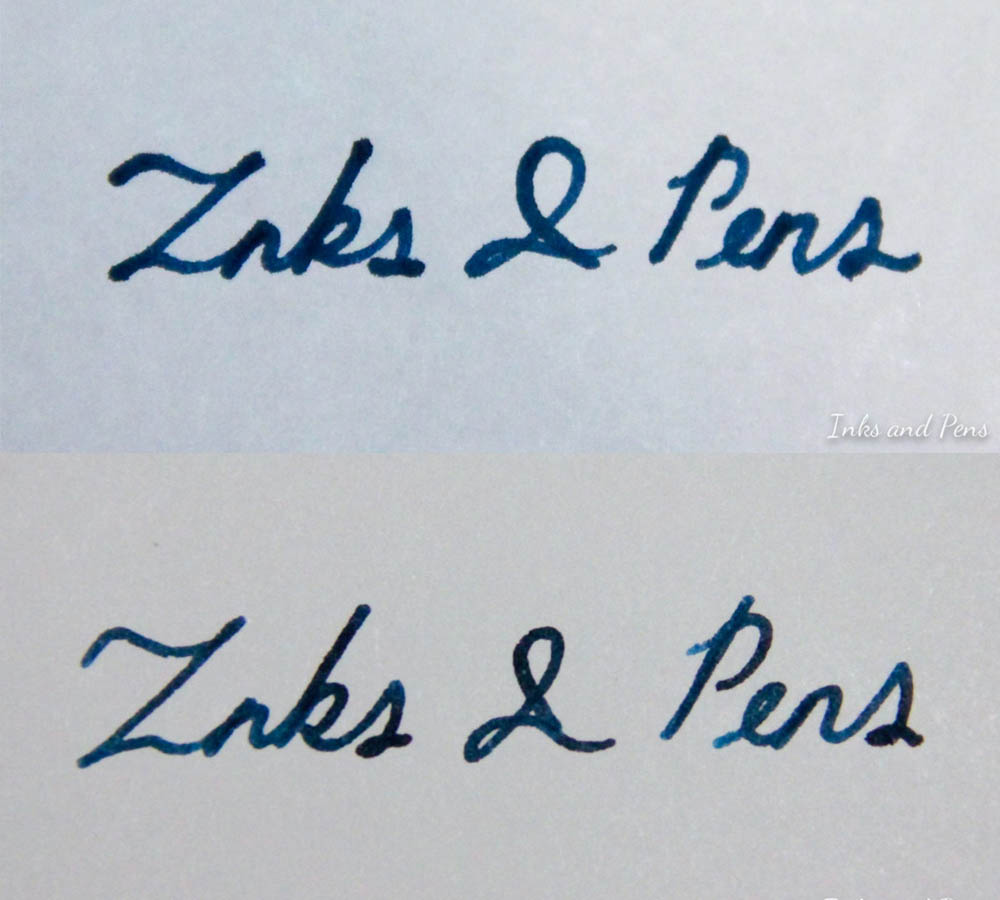
Bleed-through and Show-through
Bleed-through is very common on thinner papers or bad quality papers that tend to absorb ink very quickly. Higher-end papers generally are coated and manufactured in a way to resist ink from bleeding through, no matter how thin the paper is. However, even with the best fountain pen paper, you may get traces of your writing being visible on the other side. This is known as show-through or sometimes called “ghosting.” Show-through can be countered by using a thicker paper stock, such as 32lb over 20lb.
This picture shows a large amount of bleed-through. The top is the same Xerox 24lb paper as the above picture and has many spots where the ink seeps through. In extreme cases, the ink can also be seen on the sheet below it as well. The bottom was the same HP paper and exhibits absolutely no bleed-through or show-through at all.
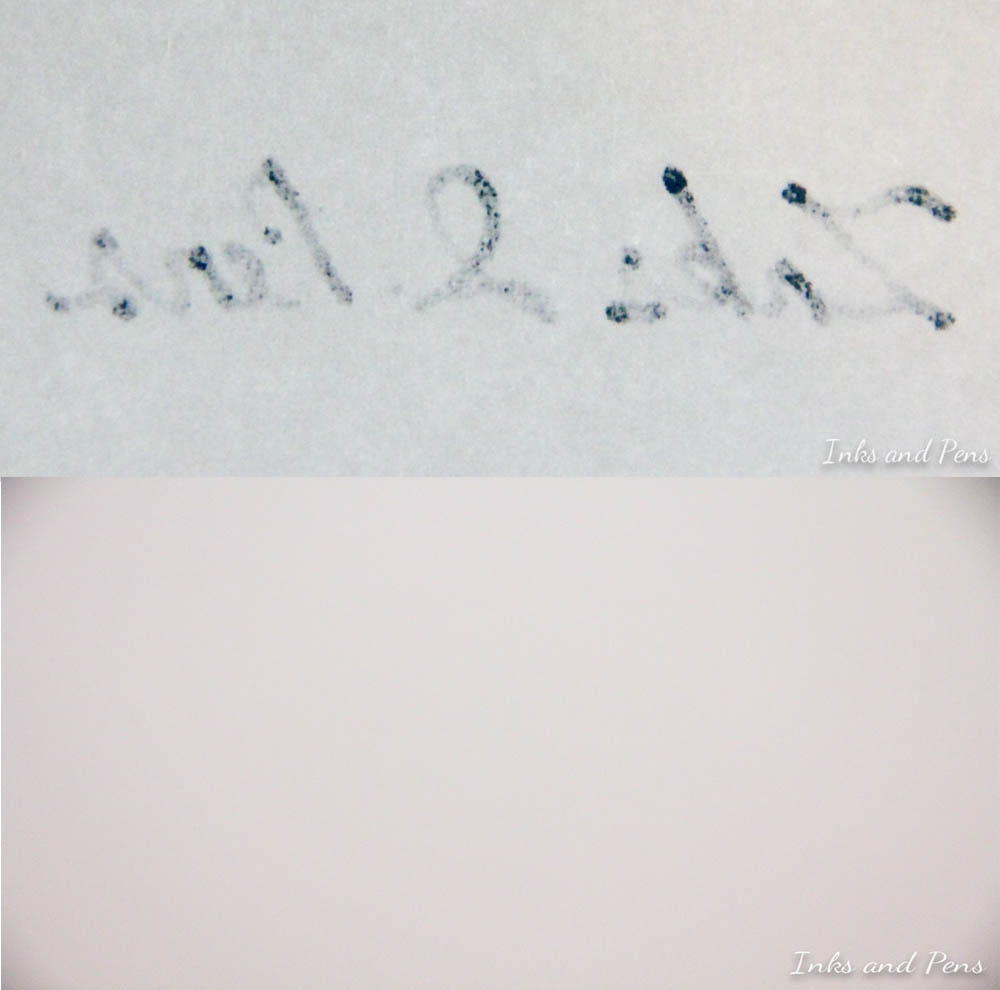
Texture
Some papers have a much smoother texture than others. Fountain pens generally pair well with papers that are very smooth, as the nib will just glide over the paper. Generally, coated papers tend to be more smooth while uncoated ones have a rough texture. Other specialty papers, such as cotton paper, will have a woven texture, much like a shirt or fabric.
Drying Time
When you write on paper, the ink laid down takes some time to dry completely without smearing. The dry-time factor has a lot to do with the specific ink used (fast-dry inks for example), but will all conditions being equal, some papers dry faster others. As a good rule of thumb, smooth and coated papers tend to take longer to dry than uncoated, rough papers. As well, a paper than greatly resists bleed and feathering will tend to take longer to dry, as the ink must evaporate instead of being absorbed.
Rulings
If you have ever used a standard notebook, you must be familiar with American college-ruled or wide-ruled paper, which has lines spaced at regular intervals along the sheet with a cut-off margin on the side. You may be surprised to learn that there are other unique rulings that can be found on fountain pen paper. There is a dot-ruling which is very similar to graph-paper, but uses dots instead of lines. There is also the French (Seyes) ruling often used to practice cursive in France, as well as many others. If you opt to use printer paper for daily writing, you can conveniently print almost any ruling you like directly onto your paper.
Price and Availability
Like most things in this world, there is very inexpensive paper that will work for fountain pens and extremely expensive paper that will work very well. However, keep in mind that not all expensive paper is guaranteed to be suitable for fountain pens.
Recommendations
The following papers are my personal favorites but are presented in no particular order. You can not go wrong choosing any ones of the papers on this list!
Tomoe River
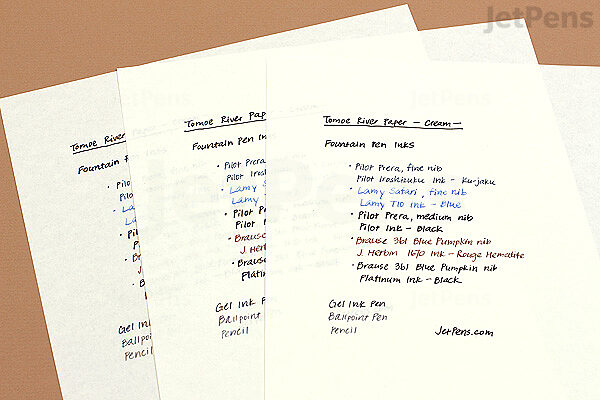
Tomoe River is a Japanese paper manufacture and it’s paper is widely known for it’s silky smooth texture and extreme resistance to ink. The paper is extremely thin, coming in at only 52 g/m2, and are very durable. They do tend to crinkle a little if you are rough with the pages, but do not rip or tear easily.
Color: Available in both White and Ivory Feathering: Absolutely none, even for very wet flex pens Bleed-through: None, except for very rare occasions Show-through: A lot, due to how thin the paper is. Normally, I recommend only using one side. Texture: Extremely smooth, like writing on glass Dry Time: Very long due to how ink resistant the paper is Rulings: Only found as blank sheets but can have rulings printed on Price: $15 for 100 sheets; quite expensive but worth the price Availability: Loose sheets or pads can be found at a few online retailers Amazon: Link here
Rhodia
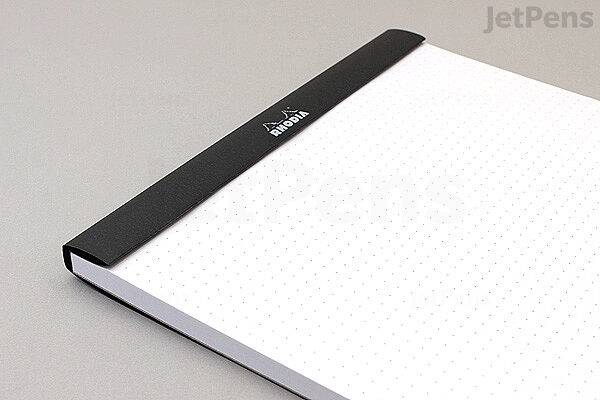
Rhodia is a very well known high-end paper brand and is extremely popular among fountain pen users for its smoothness and ink resistance. Rhodia paper is 80g/m2 and is about the same thickness as regular copy paper. Rhodia is generally known for its staple-bound pads with perforated sheets as well as their WebNotebook line.
Color: Available only as White Feathering: None, expect on ink drips and wet flex pens Bleed-through: Absolutely none Show-through: Very minimal even though the paper is not thick Texture: Extremely smooth, like writing on glass Dry Time: Long, but less than Tomoe River. Rulings: Can be found as Blank, Lined, Dot, or Graph Sizes: Can be found in full A4, A5, and pocket sized pads and notebooks Price: $14.50 for an A4 pad of 80 sheets. Availability: Pads and notebooks offered and can be found at most online retailers Amazon: Link Here
Clairefontaine
Clairefontaine paper is actually made by the same company that makes Rhodia paper so the paper quality is beyond superb. Like Rhodia, Clairefontaine has a large number of offerings in rulings and paper format. The paper is generally 90g/m2 and is thicker than regular copy paper. They are renown for their Triomphe notepads as well as their bound notebooks.
Color: Available only as White Feathering: Absolutely none, even with extremely wet flex pens Bleed-through: Absolutely none Show-through: Minimal given how thick the paper is Texture: Silky smooth and quite soft Dry Time: Long and about the same as Rhodia Sizes: A4 and A5 notepads and bound notebooks Price: $9 for a A4 Triomphe pad of 50 sheets and $6 for an A5 pad Availability: Both pads and notebooks offered and can be found at some online retailers Amazon: Link here
HP Laser Paper
HP is generally known for their computers and printers, but they also make a large selection of printer and photo paper. Their “Premium Laser” line, although designed for laser printers, works absolutely wonderfully with fountain pens. The surface is coated and offered in various paper weights: 24lb, 28lb (now discontinued), and 32lb.
Color: Available only as bright white (98 whiteness) Feathering: Generally none, except for flex pens Bleed-through: Absolutely none Show-through: Absolutely none, except for wet flex pens Texture: Smooth but not as smooth as Clairfontaine Dry Time: Medium, less than Rhoda Sizes: Available on as standard US letter size (8.5”x11”) Price: Retails at $19.99 for a ream of 500 sheets for 32lb and $14.99 for 24lb Availability: 32lb can be found at almost all office supply stores. Amazon: Link here
About Moleskine
Moleskine notebooks are can be found everywhere! They are recognizable from those rotatable stands that you see in bookstores and other retailers. Often lauded as a great notebook brand, their paper works well for pencils, ball points and rollerballs. However, their paper performs terribly with fountain pens, feathering like a tissue and often bleeding through onto the second sheet. Personally, I stay as clear away from Moleskine as I can as the paper just does not work for me. Some people have found success using Extra-Fine (EF) nibs on the notebooks, but not many.
Let me you know favorite papers or papers that you just hate in the comments!
(Product images are credit to JetPens and were used with written permission.)

